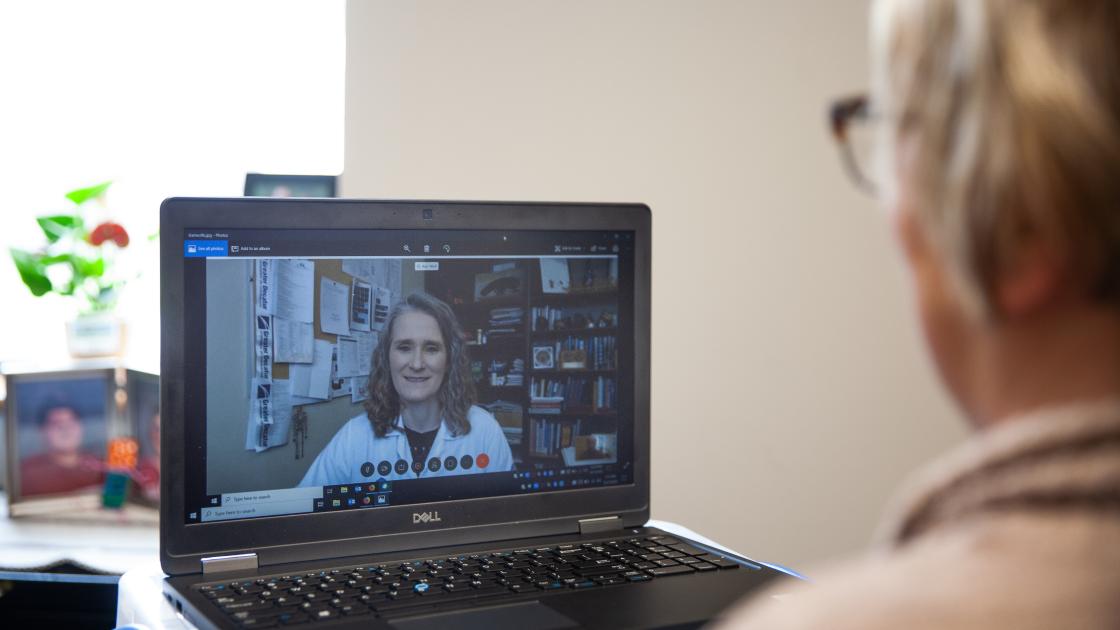
3 ways to raise breast cancer awareness
During National Breast Cancer Awareness Month, we should take some time to educate ourselves and others about breast cancer. Here are three ways you can get involved and become more well-informed about this common health condition.
1. Show your support
In the United States, women are diagnosed with breast cancer more than any other type of cancer. A woman has a 1 in 8 chance of being diagnosed with breast cancer in her lifetime (though a person's individual risk may vary). This means that you or someone you know will probably be impacted by breast cancer at some point in time.
Showing your support to breast cancer patients and survivors is a great way to raise awareness and make a meaningful difference in other people's lives. Need some ideas? Here are some things you can do:
- Donate to a trusted charity that supports breast cancer care, prevention and research.
- Organize a hat, slipper or scarf drive for a breast cancer treatment center in your community.
- Lend a helping hand to a person battling breast cancer—you might offer to pick up their prescriptions, walk their dog, cook some freezer-friendly meals or drive them to their medical appointments or support group meetings.
- Be a listening ear and ask a survivor to share her story.
2. Brush up on your self breast exam skills
According to studies, regular self breast examinations have not reduced the risk of dying from breast cancer and are not the most reliable way to detect cancer, although some women do discover their breast cancers before their medical providers. Self-breast exams can cause many women to experience increased anxiety or undergo unnecessary tests and procedures if they find a lump that turns out to be benign (non-cancerous).
Even so, breast self-exams are still thought to be beneficial because they help women:
- Learn what's "normal" for their breasts, including the look and feel of their breast tissue (which can change for reasons other than cancer)
- Feel more comfortable speaking to a health care provider about their concerns
- Reach out to a provider earlier if any unusual changes are detected
Need a refresher on how to do a self-breast exam? Here are some tips to keep in mind:
- Perform a self-breast exam once a month, around the same time each month—ideally, about a week after your period starts.
- You can perform a breast exam in whatever position feels most comfortable for you, such as standing in the shower or sitting or lying down. It's important to examine yourself while not wearing a top and bra, so be sure to do your exam when and where you won't be disturbed.
- Use the pads (not tips) of your three middle fingers on one hand to check the entire breast and armpit area on the opposite side. Move your fingers in a consistent pattern and use a mixture of light, medium and firm pressure. Then, switch hands and check the opposite breast and armpit area. Take your time and be on the lookout for any new or unusual lumps, bumps, painful spots or areas that look different to you.
- You should also visually inspect your breasts in front of a mirror with your arms at your sides and raised above your head, again looking for anything new or unusual.
If you find anything concerning, call your health care provider. Most changes in breast tissue are normal and nothing to worry about, but it's still a good idea to have any new changes checked out by a medical professional. It’s important for women to talk to their health care providers about screening and preventive measures, based on their individual breast cancer risk factors.
3. Find out if you're due for a mammogram
Did you know? In May of this year, the U.S. Preventative Services Task Force (USPSTF) updated their recommendations regarding the frequency and timing of mammograms for American women. Mammograms are X-ray images of breast tissue used to screen for cancer.
The independent panel of primary care and prevention experts now advises women to have screening mammography every other year, beginning at age 40. Previously, the USPSTF advised average-risk women to wait until age 50 to begin undergoing mammograms.
It's important to realize that specific mammogram guidelines vary among different organizations. For example, some experts recommend yearly mammograms instead of every other year. Only you and your doctor can know for sure when and how often you should get mammograms, based on your individual risk factors.
And since October is Breast Cancer Awareness Month, now is the perfect time to reach out to your provider and find out what your next steps should be!
Ready to learn more and do more about breast cancer?
Whether you'd like to schedule a mammogram, learn about a local breast cancer support group or speak to a provider about a health question, our experienced team at SIU Medicine is ready to help you in any way we can. Find a doctor today to learn more.




